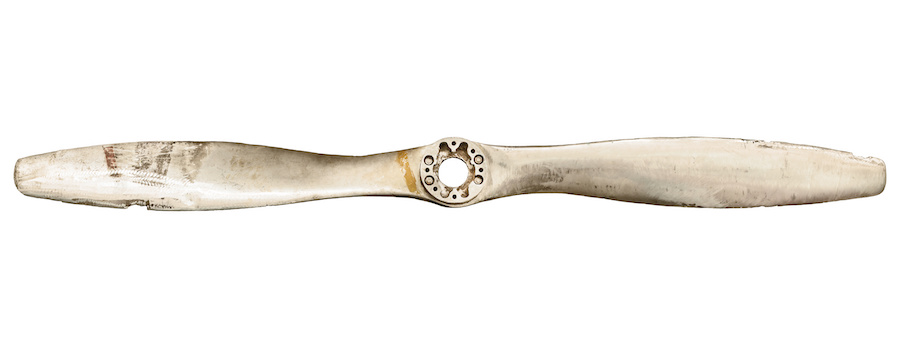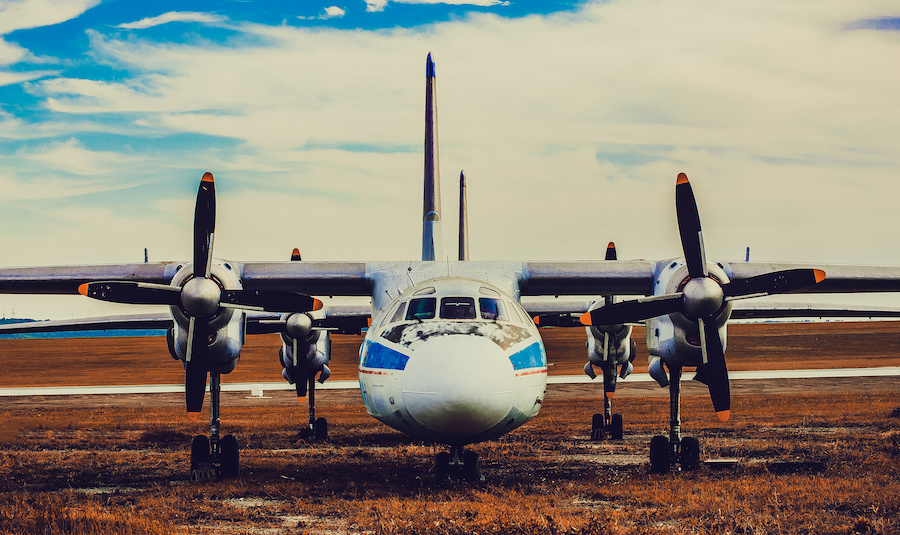-
Types of FOD
-
Why is FOD Dangerous to Aircraft?
- FOD Can Block and Damage Aircraft Instruments
- FOD Damages Aircraft Tyres
- Aircraft Engines Don't Like FOD
- FOD Obstructs Flight Controls
- FOD interrupts Navigation Aids
- A Clear View?
- FOD can Be a Projectile!
-
How is FOD Prevented and Managed?
- FOD Prevention
- FOD Detection
- FOD Removal
- FOD Evaluation
-
How is FOD Detected?
-
Conclusion
While taxying around the airport, they seem like pretty clean places, right? Actually, not quite. With such a large surface area, airports are prime locations to accumulate all sorts of junk, colloquially known as “FOD”. What is FOD, and what are the dangers? Well, you are about to find out as we talk you through what FOD actually is, the various types, and how it is detected.
FOD is an acronym for “Foreign Object Debris”. This refers to any object in or on the airport that shouldn’t be there and represents a danger to people and maneuvering aircraft. FOD can be large or small and isn’t always easily identified. There are various ways FOD is reported and removed.
The less obvious types of FOD can sometimes be the most dangerous. Let’s look at where FOD comes from and the risks it presents.
Types of FOD
Foreign object debris or “FOD” can appear in various forms. Some are preventable, and others are just a result of circumstance. According to FAA advisory circular AC 150/5220-24, all of the following are classed as types of FOD: –
- Aircraft Fasteners – Airplanes occasionally drop the odd screw, rivet, or safety wire. While these might not seem like a big deal, even a small bolt can wreak havoc inside a jet engine.
- Aircraft Parts – Various items can come loose from aircraft. This type of FOD could include rubber from tires, brake pads, fuel caps, door hinges, and more…
- Mechanics Tools – Engineers sometimes leave the odd tool hiding in a wheel well or bay, shaken loose and shed from aircraft as it taxies. These tools can represent a significant hazard.
- Catering Supplies – Every day, thousands of meals are loaded and unloaded from aircraft nationwide. With catering trucks whizzing around the airport, it is hardly surprising a few ‘bits and pieces’ occasionally get dropped.
- Flight Line Items – These are items accidentally dropped by operating airport personnel. This can include things like ID badges, lanyards, Hi-visibility jackets, pens and pencils, and baggage tags.
- Apron Items – This is the name given to various items that are usually found on airports but become FOD when they aren’t where they are supposed to be. This could be freight pallets, containers, towbars, baggage carts, and other debris.
- Runway and Taxiway Materials – Taxiways and runways are subject to thousands of tons of air traffic per day, so it is hardly surprising that the occasional lump of asphalt makes its way loose. Even small chips of stone can be terminal for a jet engine!
- Construction Debris – This includes things like wood chips, nails, fasteners, and stones.
- Plastics and Polyethene’s – Plastic bags are one of the most common types of FOD. Due to their lightweight nature, they are blown onto the airport from outside sources.
- Natural Materials – Mown grass, bird’s nests, and even piles of leaves all constitute FOD.
- Weather-Related Contaminants – Snow and ice can accumulate in the winter months and be blown to critical areas. Also, aircraft may ‘shed’ ice as they taxi!
Why is FOD Dangerous to Aircraft?
Some of the above might not sound so serious.
After all…
A plastic bag isn’t too dangerous?
Actually, all of the FOD items on the above list represent a significant threat to safety and aviation. Here are some reasons why this is so: –
FOD Can Block and Damage Aircraft Instruments
Most aircraft pitot tubes, the main sensors for the pilot’s instruments, are around the same diameter as a drinking straw. Located on the outside of the aircraft, they are very easily blocked.
The harm?
Blocked instruments can lead to big trouble in the air!
FOD Damages Aircraft Tyres
A bolt or stray nail is fairly easy to miss. But when you consider that aircraft tires are often inflated to 200psi (roughly six times that of your average car), a puncture can be explosive and very dangerous!
Aircraft Engines Don’t Like FOD
Aircraft engines, especially jet engines, are finely tuned with exact tolerances. Aside from air, nothing is supposed to go through them. Plastic bags are easily sucked in and ingested into the engine, often with catastrophic results.
It can happen really easily. Here’s a quick video showing how jet engines ‘pick up’ FOD from the surface.
FOD Obstructs Flight Controls
It is vital that aircraft flight controls can move unhindered in all directions. If movement is restricted or foreign bodies are held within the system, this can lead to a very dangerous outcome.
Want an example?
A simple cleaning cloth led to flight control wires being dangerously degraded in this Boeing 737!
FOD interrupts Navigation Aids
It isn’t just aircraft that are directly affected by FOD. Ground-based navigation aids can be degraded too!
In particular, instrument landing systems or an “ILS” to use the common abbreviation. These precision approach aids are very sensitive, so much so that pilots can land in zero visibility using them.
However.
For them to be effective, they need to be entirely unobstructed. Airports go to great pains to ensure that the area surrounding instrument landing systems is kept ‘sterile’, with a defined zone where nothing is allowed to enter when aircraft are on approach.
FOD compromises the accuracy of these systems.
A Clear View?
It might seem obvious, but FOD can sometimes stick to windshields and obstruct the view from the flight deck. At taxy speeds, this isn’t so much of a problem, but if it occurred during rollout on the runway at 150 knots, it could be a different story all together!
FOD can Be a Projectile!

FOD doesn’t just affect jet aircraft. Propellor driven aircraft are at risk too! Imagine a propellor spinning at over 3000 revolutions per minute coming into contact with a bolt, screwdriver or any other type of FOD? That could be lethal if someone is in the wrong place at the wrong time!
How is FOD Prevented and Managed?
As a result of all of the above, the Federal Aviation Administration takes FOD extremely seriously. While it is doubtful that FOD can be entirely removed, its effects and presence can certainly be minimized.
According to another FAA Advisory Circular, a 4 pronged plan is in place to deal with FOD. It has the following four themes
FOD Prevention
By making operators and aviation personnel aware of the dangers and providing an overall program, airports can seek to reduce the presence of FOD. It is worth noting that this also includes maintenance procedures to prevent FOD.
FOD Detection
If FOD is present, airports and operators need to be able to identify it. There are several ways this is achieved, and I describe them below.
FOD Removal
Ever seen someone try and throw something in the trash, only for it to fall out again. This is not what we need to happen with FOD.
The FAA gives detailed guidance in the document mentioned above about methods to remove FOD and information on suitable means to store it until it can safely be disposed of.
FOD Evaluation
This forms the final ‘link in the chain’. The best way to see if a program is working is to evaluate it. If FOD of a certain type keeps appearing, perhaps the best way to deal with it is to evaluate where it is coming from and why?
How is FOD Detected?
Airports are pretty big places, and as we have seen, FOD can be quite small. Does that mean that we just have to accept it?
Absolutely not!
You may be surprised to learn that several systems are used to detect FOD. Generally, there are 4 ways this is achieved: –
- Visual Contact FOD Detection – This method is perhaps the most obvious. Regardless of size, anyone who notices FOD is obliged to report it. To ignore it could cause problems for others even if you aren’t affected!
- Radar FOD Detection – Certain areas of the airfield are often hidden or too far away to be seen with the naked eye. Radar is particularly useful, especially in remote and ‘uncluttered’ areas. It should be noted that radar isn’t too effective for smaller objects.
- Electro-Optical FOD Detection – Smart cameras that are capable of identifying foreign bodies are used at many major airports. It’s actually amazing at what they can pick up. These units are often mobile and placed on operational vehicles that will drive regular inspection routes. Alternatively, they are permanently fixed in critical or FOD-prone areas. Here’s what they look like.
- Hybrid FOD Sensing – Hybrid FOD detection is the best of both worlds. It utilizes radar to identify potential sources and then electro-optical means to further confirm the presence of FOD.
Conclusion
FOD is actually a really serious issue. Although the size of the objects may be relatively small or light, it can still be dangerous. FOD can easily lead to injuries and accidents. If you notice FOD on the apron or in any Air Operations Area, it must be reported and removed immediately. It’s well worth remembering that even if it doesn’t affect you, it may very well affect someone else!

 @pilotinstituteairplanes
@pilotinstituteairplanes


